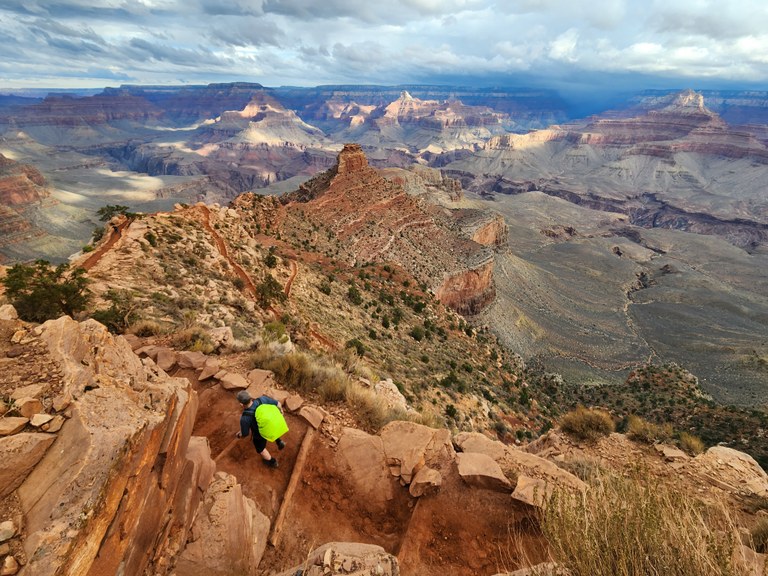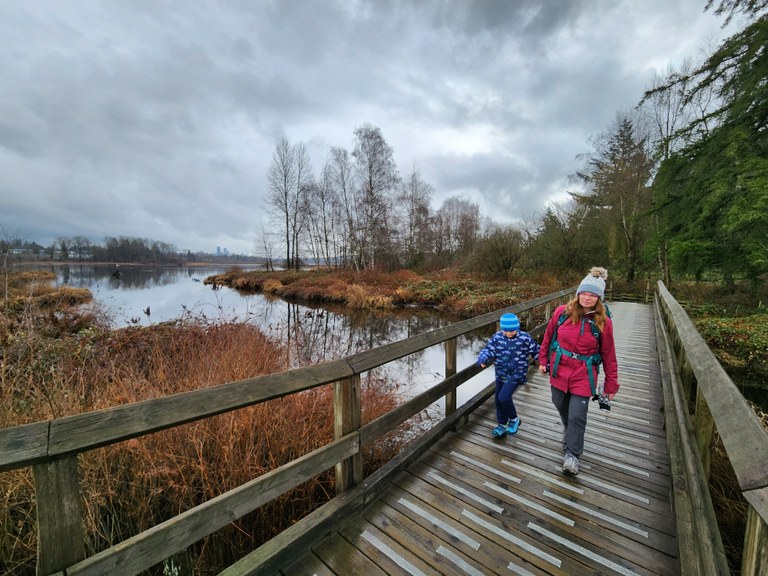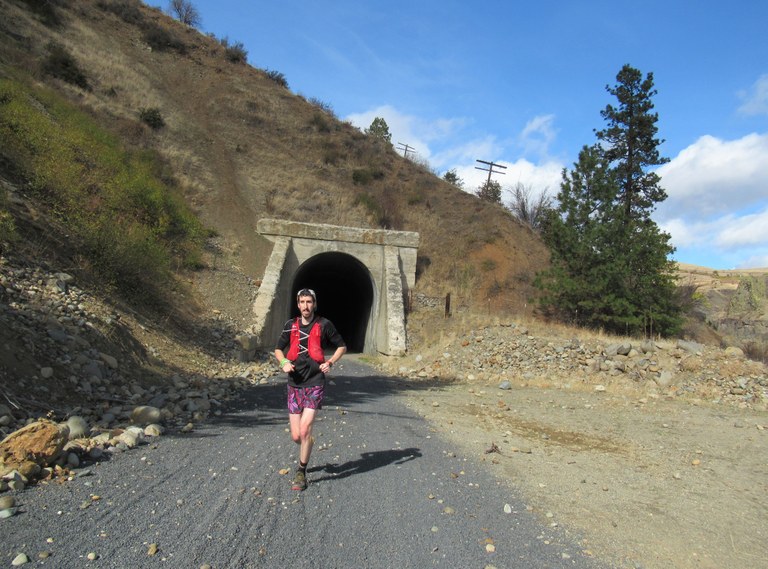 Washington Trails
Association
Washington Trails
Association
Trails for everyone, forever
If you’re feeling a bit blah about hiking, these tips can help you find the spark again. By Craig Romano
For the past 12 years, Sept. 1 has elicited the same reaction from me — a sigh of relief. I don’t have to hike today! That may seem counter to what you expect to hear, but let me explain. The month of August is Washington Trails Association’s annual Hike-a-Thon, which I proudly participate in to raise money for our trails, and I put in some serious time. I often cover more than 300 miles and hit the trail every day of the month. By the end of Hike-a-Thon, I am ready to take a break, although it’s often a short reprieve as two of my biggest passions in life are hiking and running. But for someone who hikes and runs for a living — putting in upward of 2,500 miles a year for decades — is it possible to get trail burnout? Yes.

Sometimes, all it takes to recapture the joy of hiking is a change of perspective. Photo by Craig Romano
Like almost everything in life, hiking can sometimes lose its appeal, feel rote or grow stale. And like many aspects of life, my feelings and engagement with being on the trail ebb and flow. Sure, there are a few of you out there who never tire of the trail, regardless of circumstances or points in your lives. But most of us are subject to burning out, growing bored or just losing our zest if something becomes routine. Or if we don’t grow, learn and perhaps shake things up a little along the way.
When I feel burnout approaching and realize that I’m not excited about hitting the trail, it’s time for a change. And even when inertia is weighing heavy on me, a change almost always renews my relationship with hiking. Usually within no time, my desire to be on the trail is strong again. I excitedly peruse guidebooks, websites, trip reports and maps to plan out my next trail adventure.
So here’s my formula of changes to help refresh and restore your love of hitting the trail.
Start hiking new trails! There’s comfort in the familiar. But there is a sense of adventure in the unknown. One of the things that has helped me stay so excited about hiking in Washington is that I get to hike in every corner of the state — and this state is diverse and full of surprises. If you’ve never ventured far from the I-90 or Highway 2 corridors, make it a point to expand your hiking horizons. Plan a trip to the San Juan Islands in the winter, the Olympic Coast or Columbia River Gorge in the spring and the Kettle River Range in the fall.

Sample some different types of trails. Check out our state’s extensive rail trails and urban trail systems. Explore the trails in our state parks and national wildlife refuges. Visit land trust preserves, college campus trails and county parks.
Go farther. If you have the time and means, explore trails in other parts of the country or in other countries. I frequently hike in British Columbia, California and on the East Coast. I am always mesmerized by unfamiliar plants and animals or blown away by landscapes that can’t be found in the Northwest — like barrier islands, badlands, deserts, tallgrass prairies, bayous and northern hardwood forests. I especially like to head to the Southwest and Southeast for hiking during our wet months in the Northwest.
Do you have a set way of doing things? Time to try new ways. Hike alone? How about taking a friend along on a hike — or better yet, meeting new hiking friends through outdoor recreation groups. Hiking with others gives you a chance to build new friendships, and it can bring together people with different backgrounds who share a similar passion. You can learn from each other’s different perspectives on hiking, the outdoors and the world in general. Bring a newbie on a hike and watch them glow. Share in their fascination with things you may not notice anymore. Learn to see the world like a child and you’ll never grow bored.

Conversely, if you always hike in groups, go alone. Practice becoming more assured and confident on the trail. See things you’ve never seen before without the distractions of a companion. Hear the sounds of the wilderness uninterrupted by conversations. You might see more wildlife, too, as noises and groups of folks tend to keep the critters at a distance.
Change the time. Are you an afternoon hiker? Set the alarm and hit the trail before dawn to experience a whole new ambiance on the trail. There are few things more magical than the early morning light dancing on a mountaintop and making the forests and waterways shine. If you always try to get home before dinner, stay out late and savor a wilderness sunset or be awed by the alpenglow turning the skyline a brilliant red.
Try a new tradition. If you always head to trail x to celebrate or mark a special occasion, maybe it’s time to try trail y or z instead. If you’ve never had a hiking tradition, maybe it’s time to start one now, visiting a certain trail at regular intervals and noting the changes that occur on it with each visit.
Go a new way. Have you always hiked the Heather-Maple Pass Loop or Cape Horn Loop clockwise? Time to hike it counterclockwise! I can’t tell you how many times I’ve returned to a familiar loop hike and decided to change my direction and it felt like a completely different hike. In essence, it is! You will see things from a different angle, experience the ups and downs in a different fashion, and notice things you completely missed before.

Likewise, check out side trails you’ve skipped before. There have been times I finally hiked a spur or side trail and couldn’t believe I hadn’t checked it out sooner because it led to an unbelievably beautiful view, lake or forest.
Do you always hike in summer when the sun is shining, the days are warm and there’s ample daylight? Time to embrace the winter! Go for a hike in the rain! Check out a familiar trail in the winter to get views you’ve never had before thanks to the lack of foliage. Winter hiking also brings far fewer other hikers, no bugs and less chance of encountering menaces like rattlesnakes or ticks. It’s a great time to check out some of those Columbia River basin trails you’ve always wanted to hike.
Are you a fast hiker? Try slowing down. Instead of speeding to the visual payoff at trail’s end, go for the journey. Bring field guides or download apps that will help you identify and learn about the area’s flora and fauna. Learn about the area’s human history and look for artifacts along the way. Learning more about the natural and cultural history of the area you’re hiking through allows you to see it in a new light.

Have you always been more of an ambler? Consider running and seeing how much ground you can cover. Graduate to ultra-running and then plan trails and routes for challenges. I’ve done the same 30-mile loops as 3-day hikes and 12-hour runs, the experiences of each offer something vastly different.
Train for a big race like your first 50-kilometer or more, and then start looking at trails as your training grounds. The trails will take on a whole new meaning in your life as measurements of your commitment, drive, determination and mental resiliency. Look at the trails as your health club.
Tired of popular trails? Then take the trail less traveled. Trust me, it will make all the difference. Instead of heading up Mount Dickerman, hit Perry Creek. Instead of hiking in the Hoh Rainforest, where you’ll likely have to wait in line to reach the trailhead, check out the historic Snider-Jackson Traverse connecting the Hoh to the Bogachiel rainforest and experience this incredible area
in solitude!
If you’ve grown bored with the familiar, get out of your comfort zone and try something completely different. Try scrambling (trained and prepared, of course) or following routes. Start discovering trails lacking lots of beta (and leave a trip report when you’re done). You may find yourself alone on a spectacular trail and wonder why no one else is hiking it.
Who says trails are just for hiking? Give your hiking a break and go for a trail run. Many trails are open to bikes and horses — go for a ride! When it’s snowy, explore by snowshoe or skis. Check out our state’s water trails via canoe, kayak or paddleboard. You may end up with a whole new passion or return to hiking with a different appreciation — or hopefully, both!
Maybe it’s time to take a break from trails. Let your body rest and recover. Eschew the trails during the wet and cold months, and curl up on the couch with a hot drink and read about trails and hiking. Let absence make your heart grow fonder. In due time, you’ll be itching to hit the trail once again —likely with a new zest, vigor and love for hiking and being outdoors.
And lastly, I have found that hiking is one of the best ways for me to escape burnout in other areas of my life — particularly work. Mixing up my routines by being on the trail always rejuvenates me for life’s challenges.